Determining Nannochloropsis cell wall and more
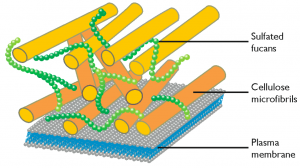 Nannochloropsis’ whole cells were recently analysed using 13C-SS-NMR spectroscopy (reference n 1). Cells were grown autotrophically in a sodium [13C] bicarbonate environment and harvested during the exponential phase.
Nannochloropsis’ whole cells were recently analysed using 13C-SS-NMR spectroscopy (reference n 1). Cells were grown autotrophically in a sodium [13C] bicarbonate environment and harvested during the exponential phase.
Quantitative spectra of 13C labelled cells of Nannochloropsis oculata were analysed for resonance picks which are characteristic of carbohydrates and lipids, thus providing, among other interesting observations, useful insights on the cell wall composition of the microalga.
Need nice pics and images for your presentation?
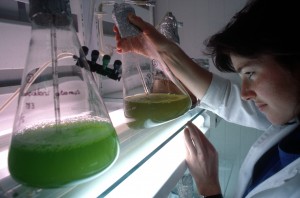
A collection of microalgae cultures at CSIRO Marine Research. Image released by CSIRO under Creative Commons Attribution license http://scienceimage.csiro.au/tag/algae/i/1938/microalgae-collection/
The Commonwealth Scientific and Industrial Research Organization (CSIRO) has just released its Scientific Image Library under a Creative Commons Licence.
Among the many available pictures and images a small section is also dedicated to the microalgal collection of the institute. Following this link you can browse and freely download useful high quality images for lectures, reports and blog posts.
Do not forget that various collection of high quality images released under Creative Common licence already exist and some of them contain images and pictures of microalgae. For instance The Wikimedia Commons Scientific Images Collection. Don’t forget that you can easily upload your pictures and images of Nannochloropsis to the wikimedia commons collection too, as I did some time ago: https://en.wikipedia.org/wiki/File:NannochloropsisMinusNitrogenNileRed.jpg
New data on lipid accumulation in Nannochloropsis
We have already discussed in a previous post two possible models of cellular metabolism that can account for oil accumulation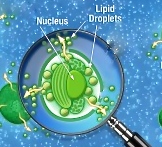 and that are in agreement with the profile of transcript and protein abundance in Nannochloropsis‘ cultures that accumulate lipids. New experimental data became recently available for the scientific community concerning this issue. Jing Li and coworkers performed a time course experiment, tracking simultaneously transcript abundance and lipid content of Nannochloropsis cultures grown in N sufficient (+N) and N depleted (-N) media. The data and their analysis were published on Plant Cell (doi: http://dx.doi.org/10.1105/tpc.113.121418). Full reference is reported at the end of this post (reference n 1).
and that are in agreement with the profile of transcript and protein abundance in Nannochloropsis‘ cultures that accumulate lipids. New experimental data became recently available for the scientific community concerning this issue. Jing Li and coworkers performed a time course experiment, tracking simultaneously transcript abundance and lipid content of Nannochloropsis cultures grown in N sufficient (+N) and N depleted (-N) media. The data and their analysis were published on Plant Cell (doi: http://dx.doi.org/10.1105/tpc.113.121418). Full reference is reported at the end of this post (reference n 1).
Access to N.gaditana B-31 data through the NCBI
After manual review by the NCBI experts, the genomic data of Nannochloropsis gaditana B-31 are now indexed in the NCBI databases and are accessible through the NCBI web interface and through the NCBI search tools (e.g. blast).
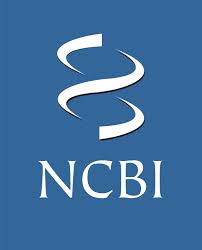
The genomes of the nucleus and of the organelles and the complete annotation of the genomic sequences are registered as bioproject PRJNA170989 ID: 170989, and can be accessed through the following links:
http://www.ncbi.nlm.nih.gov/bioproject/170989 ;
http://www.ncbi.nlm.nih.gov/nuccore/585113370
The sequencing data used to assembly of the genomes were also submitted to the NCBI SRA database and are available for consulting and download. You can find the data of: a fragment library of Nannochloropsis gaditana B-31 whole genomic DNA (i.e. includes DNA from the nucleus and from the organelles) sequenced using 454FLX Titanium XL sequencing kit, 2 half plates (http://www.ncbi.nlm.nih.gov/sra/SRX390591); a mate pair library of Nannochloropsis gaditana B-31 whole genomic DNA with an insert size of 1.5-3Kb sequenced using the SOLiD 3 Plus sequencing kit, half plate (http://www.ncbi.nlm.nih.gov/sra/SRX390674); a mate pair library of Nannochloropsis gaditana B-31 whole genomic DNA with an insert size of 3-5Kb sequenced using the SOLiD 3 Plus sequencing kit, half plate (http://www.ncbi.nlm.nih.gov/sra/SRX390681). Note that details about the biosamples and about the experiments are linked o the data.
Read More…
New features on the Bibliography section
We added a new feature to the Bibliography: “Altmetric donuts” close to each publication listed in the page.
What are the Article Level metrics (Altmetric) ?

Altmetrics give a measure of the digital impact and reach of an article by combining a selection of online indicators (both scholarly and non-scholarly) . They do this by tracking, collecting and measuring large amounts of data collected from all of the places where people talk about science online – for example, blogs, Twitter, Facebook, Google+, message boards and mainstream newspapers and magazines. Altmetric allows authors and publishers to see what people are saying about a scholarly paper and can tell them how much attention a paper is receiving relative to their peers.
Read More…
We’re looking for new authors and contributors
 Are you an expert about Nannochloropsis? Is your research focused on this organism?
Are you an expert about Nannochloropsis? Is your research focused on this organism?
Consider becoming a new author of this blog and contributing to the scientific discussion!
Why don’t you start with advertising your recent publication or commenting on the posts of this blog?
Is there any hot topic that you would like to discuss or any suggestion that you would like to ask to this scientific community?
Fill this form and we will be happy to consider you application as new author
Nannochloropsis genomes, what have we learnt?
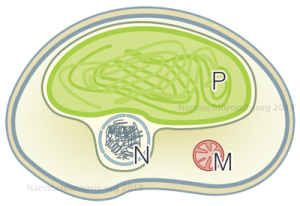
Schematic representation of Nannochloropsis cell by Andrea Telatin
Thanks to the sequencing of the genomes of two strains of Nannochloropsis gaditana [1][2] and two strains of Nannochloropsis oceanica [3][4] we now have the reference sequences to design molecular biology experiments on this microorganism. Moreover we have learnt a great deal of information, opened up new interrogatives .. and more will come analysing the data available though this portal and through the other web resources: N. gaditana CCMP526 genome and N. oceanica CCMP1779 genome.
Nannochloropsis genome is small, about 28-29 Mega bases, and very compact: there is on average 1 gene each 2.7 kilo bases in N. gaditana B-31, the genes are long on average 1.2 kilo bases and they contain very few introns.
The proteins predicted in the two species are in large part similar, about 80% of the proteins of each species are found in clusters of homologous proteins, ~60% of which accomodate proteins common to the two species. Further studies will help ruling out the limits and the inaccuracies of the gene predictions allowing to focus on the actual differences between the two species.
The pathways leading to the synthesis of cellulose and sulfated fucans and to the remodelling of cellulose in the cell wall have been identified both in N. gaditana and in N. oceanica, casting a light on the molecular composition of the cell wall and suggesting possible targets of genetic modification.
Help us keeping Nannochloropsis web resource up to date and advertise your paper!
Now available an on line form to share your findings with the Nanncohloropsis scientific community!
By completing the on line form you will advertise your paper through our Bibliography page and you will signal to the “nannochloropsis.org” personell how to update the databases integrating your new findings!
We will integrate your data as soon as possibile. And we will be pleased to open a discussion on your new findings in this blog with your help!
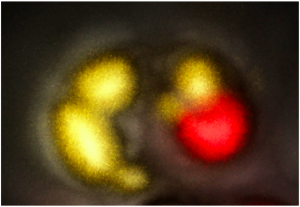
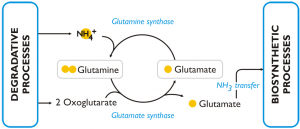
Recent Comments